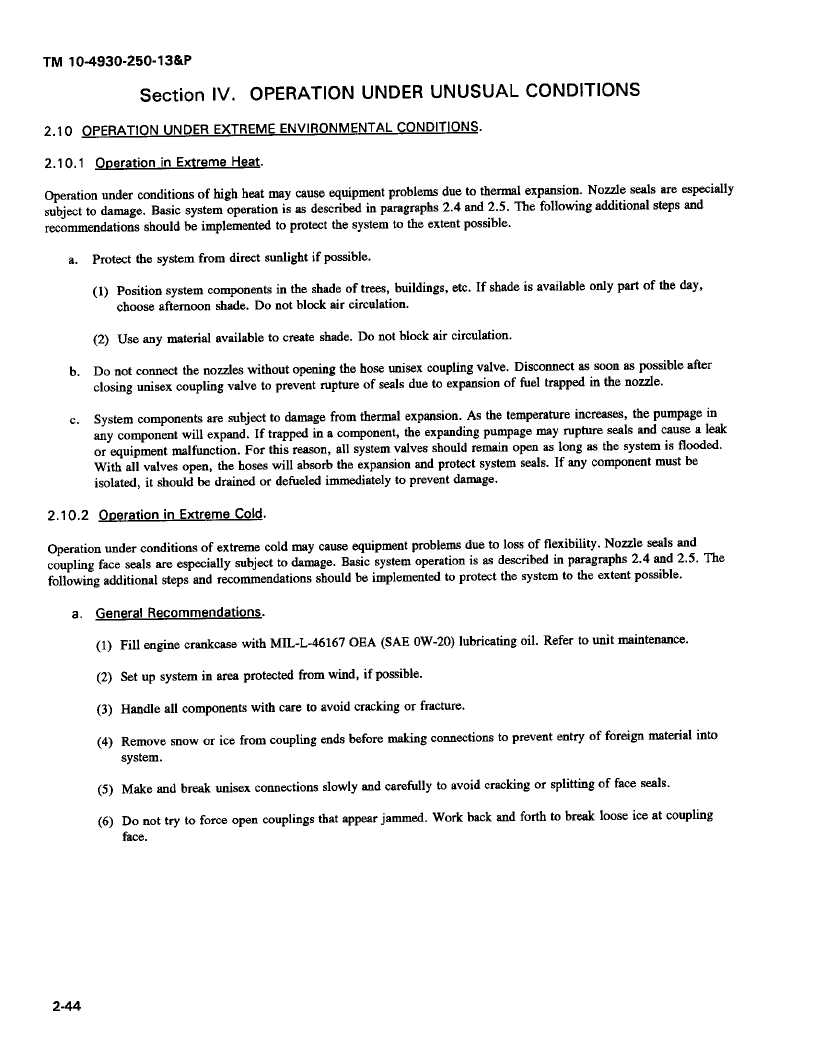|
| |
TM 10-4930-250-13&P
Section IV. OPERATION UNDERUNUSUAL CONDITIONS
2.10 OPERATION UNDER EXTREME ENVIRONMENTAL CONDITIONS.
2.10.1
operation in Extreme Heat.
Operation under conditions of high heat may cause equipment problems due to thermal expansion. Nozzle seals are especially
subject to damage. Basic system operation is as described in paragraphs 2.4 and 2.5. The following additional steps and
recommendations should be implemented to protect the system to the extent possible.
a.
Protect the system from direct sunlight if possible.
(1) Position system components in the shade of trees, buildings, etc. If shade is available only part of the day,
choose afternoon shade. Do not block air circulation.
(2) Use any material available to create shade. Do not block air circulation.
b.
Do not connect the nozzles without opening the hose unisex coupling valve. Disconnect as soon as possible after
closing unisex coupling valve to prevent rupture of seals due to expansion of fuel trapped in the nozzle.
c.
System components are subject to damage from thermal expansion. As the temperature increases, the pumpage in
any component will expand. If trapped in a component, the expanding pumpage may rupture seals and cause a leak
or equipment malfunction. For this reason, all system valves should remain open as long as the system is flooded.
With all valves open, the hoses will absorb the expansion and protect system seals. If any component must be
isolated, it should he drained or defueled immediately to prevent damage.
2.10.2
0geration in Extreme Cold.
Operation under conditions of extreme cold may cause equipment problems due to loss of flexibility. Nozzle seals and
coupling face seals are especially subject to damage. Basic system operation is as described in paragraphs 2.4 and 2.5. The
following additional steps and recommendations should be implemented to protect the system to the extent possible.
a.
General Recommendations.
(1)
Fill engine crankcase with MIL-L-46167 OEA (SAE OW-20) lubricating oil. Refer to unit maintenance.
(2) Set up system in area protected from wind, if possible.
(3)
Handle all components with care to avoid cracking or fracture.
(4)
Remove snow or ice from coupling ends before making connections to prevent entry of foreign material into
system.
(5)
Make and break unisex connections slowly and carefully to avoid cracking or splitting of face seals.
(6)
Do not try to force open couplings that appearjammed.... Work back and forth to break loose ice at coupling
face.
2-44
|

